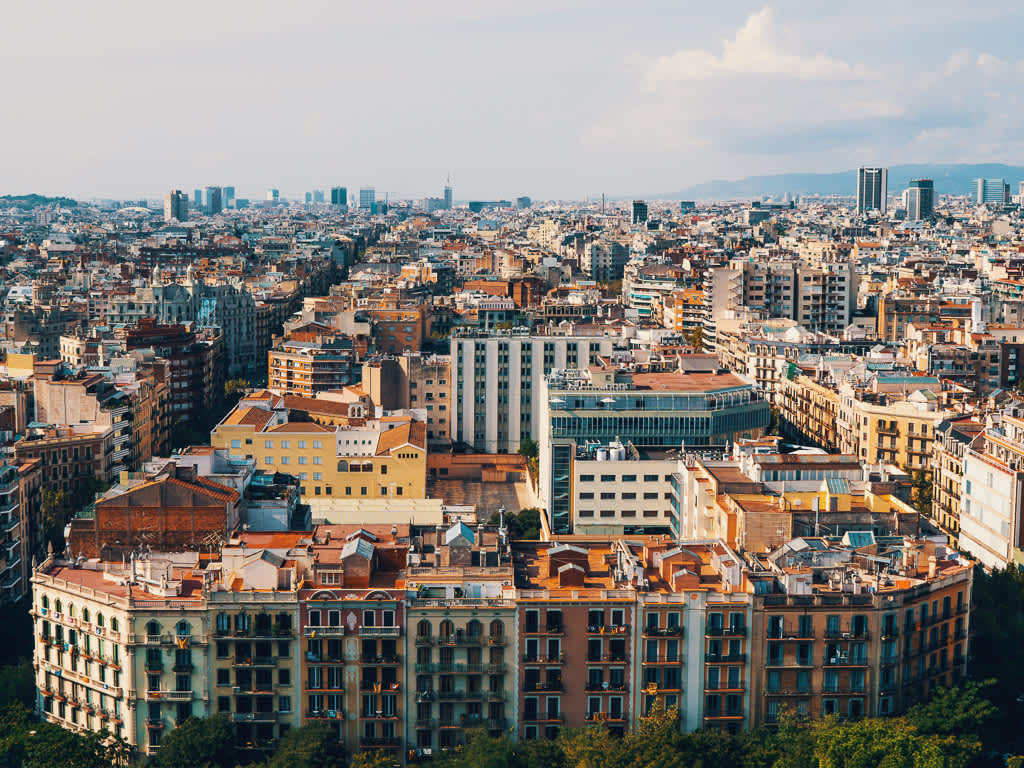Sintra is a charming destination in the Lisbon district of Portugal. The town is best known for its castles, palaces, and the natural beauty of the surrounding mountains. It’s an easy 40-minute trip from Lisbon, which makes it a perfect day trip from the capital city. Sintra is perched at the top of a mountain, so to make the most out of your time in Sintra, be prepared for some serious walking!
Our First Stop: Peña Palace
There are plenty of things to see and do around Sintra. The Peña Palace is one of the most famous Sintra landmarks and was first established as a monastery during the Middle Ages. Its modern façade was commissioned in the 19th century by King Ferdinand II and Queen Maria II. The palace was created entirely from stone, with Moorish arches, towers, and a large central tower that reaches an impressive height. Inside, you can find a variety of luxurious rooms built with exquisite details we explore during our Day Trip from Lisbon.
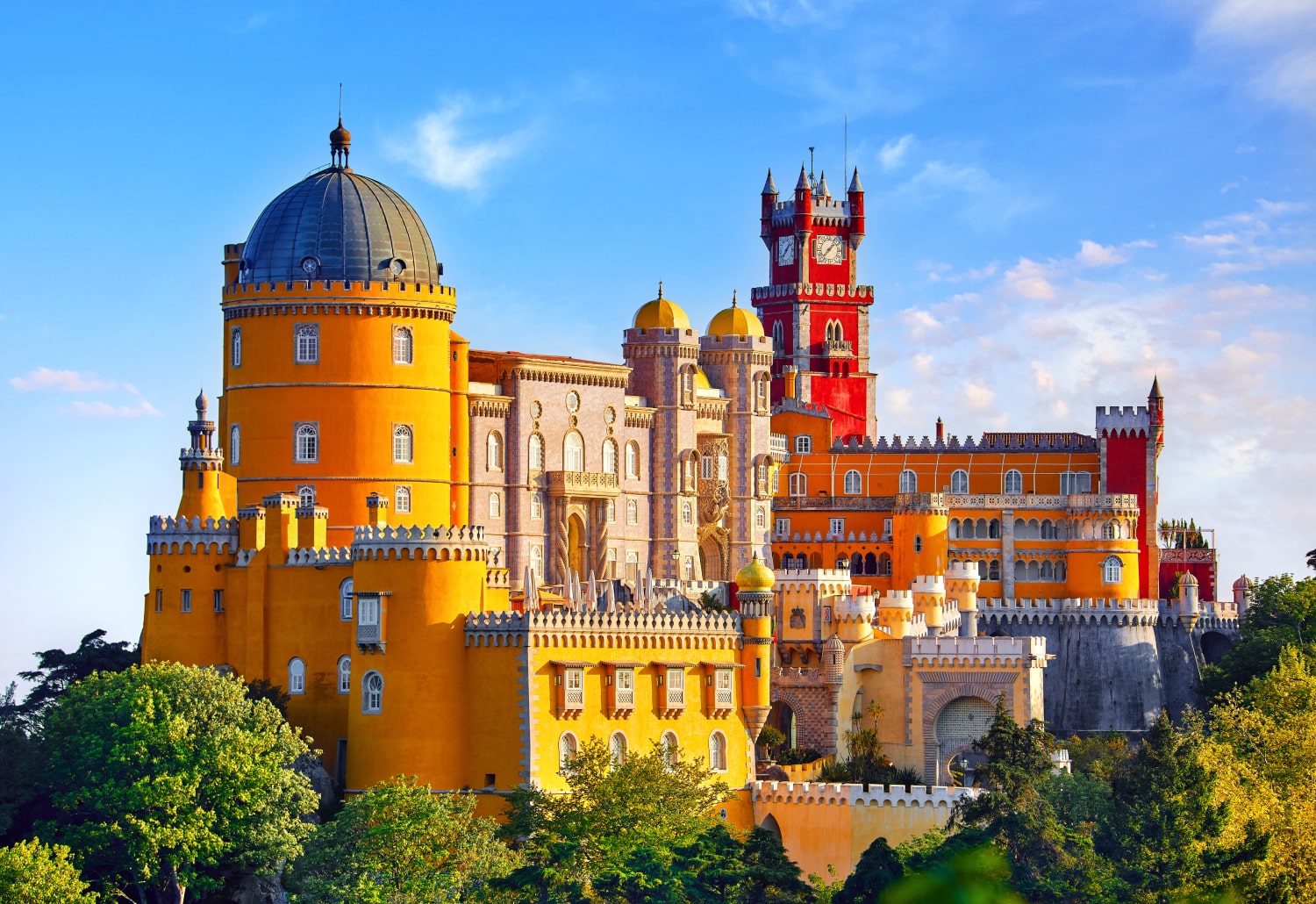
Peña Palace and Park are one of the most famous Sintra landmarks and attractions.
Peña Palace is one of the most famous Sintra landmarks and attractions. It was classified as a UNESCO World Heritage Site in 1995 and has many different buildings, statues, and panoramic viewpoints to explore. Once you’ve toured the palace, there are a wide variety of trails to explore through its park system.
Located amongst the Serra da Estrela mountain range, the park provides abundant outdoor recreational activities for Sintra residents and travelers. It’s full of picturesque monuments and panoramic views of the region.
The Peña Palace was built in 1838 by King Ferdinand II to be used as a summer palace for his guests to stay at during their visits. The palace is surrounded by a beautiful landscape that includes mountains, lakes, and forests.
If you are planning on visiting this wonderful place make sure you bring your camera so that you can take pictures of everything that you see there! You can easily spend an entire day exploring all of the colorful buildings, winding paths, and statues.
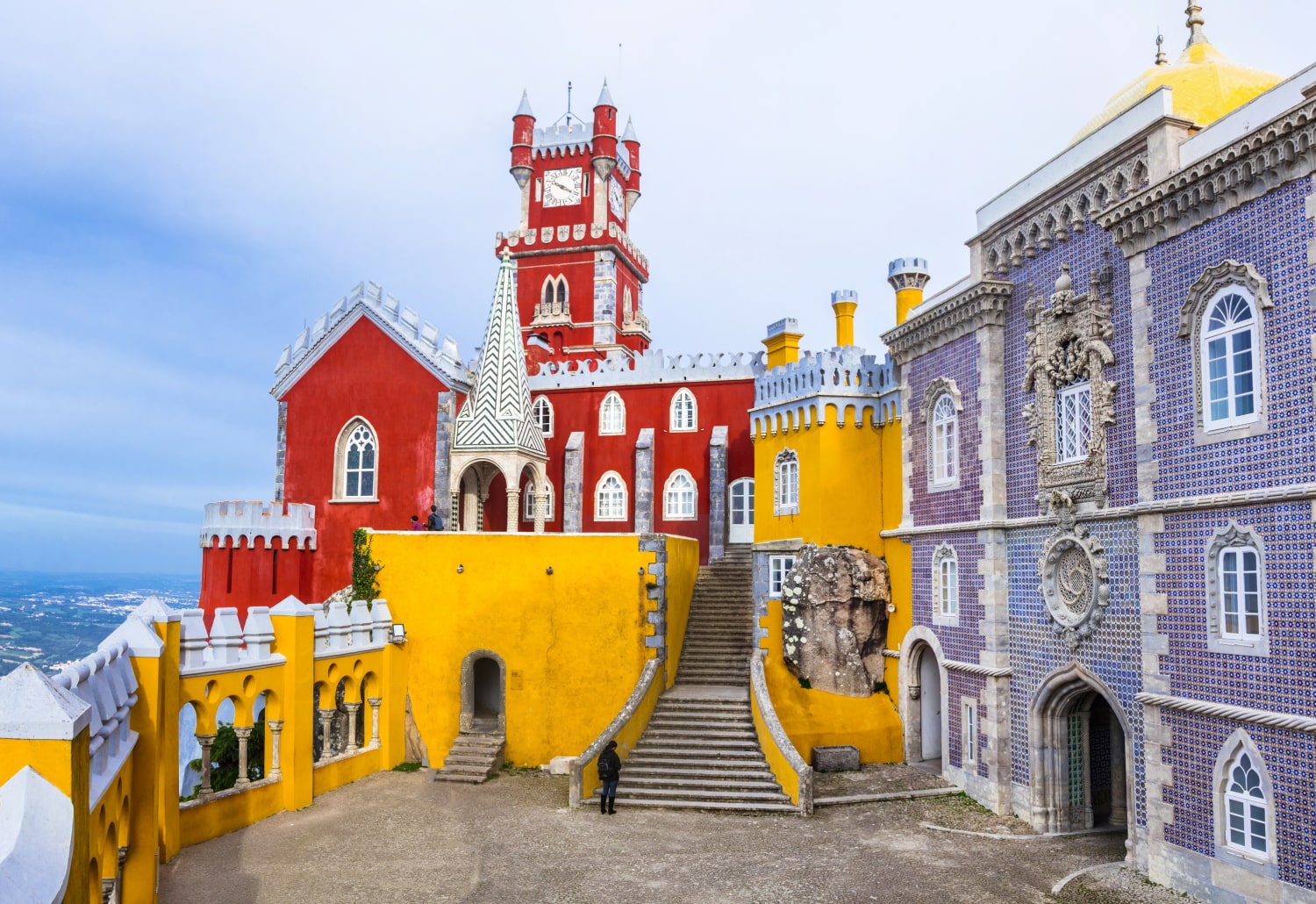
The Peña Palace is large and it can take you a while to get around. You can easily spend an entire day exploring all of the colorful buildings, winding paths, and statues. The park itself has many different trails to choose from which are all marked clearly with signs that show where they lead and how long it will take to walk them.
The Peña Palace is one of the most beautiful castles in Europe and it's a must see while you're in Sintra. It has been home to many famous people over the years but it's most famous for being owned by King Ferdinand II and Queen Maria II. They had it built between 1843-1860 as a summer residence for themselves, but they never actually spent much time there because they were always busy with royal duties.
The Peña Palace is located on top of a hill so there are 200 steps that lead up to this viewpoint. We promise though, that once at the top you can look into a chapel or walk around outside to see all of Sintra’s most famous landmarks. While walking around outside we saw some other castles in the distance which was really cool too. You can also walk into this chapel if you want more views from inside as well.
If you have time we would recommend taking a look at some of the other beautiful sights in Sintra such as the Moorish Castle (built by Moors in the 8th century) and the Palace of Monserrate.
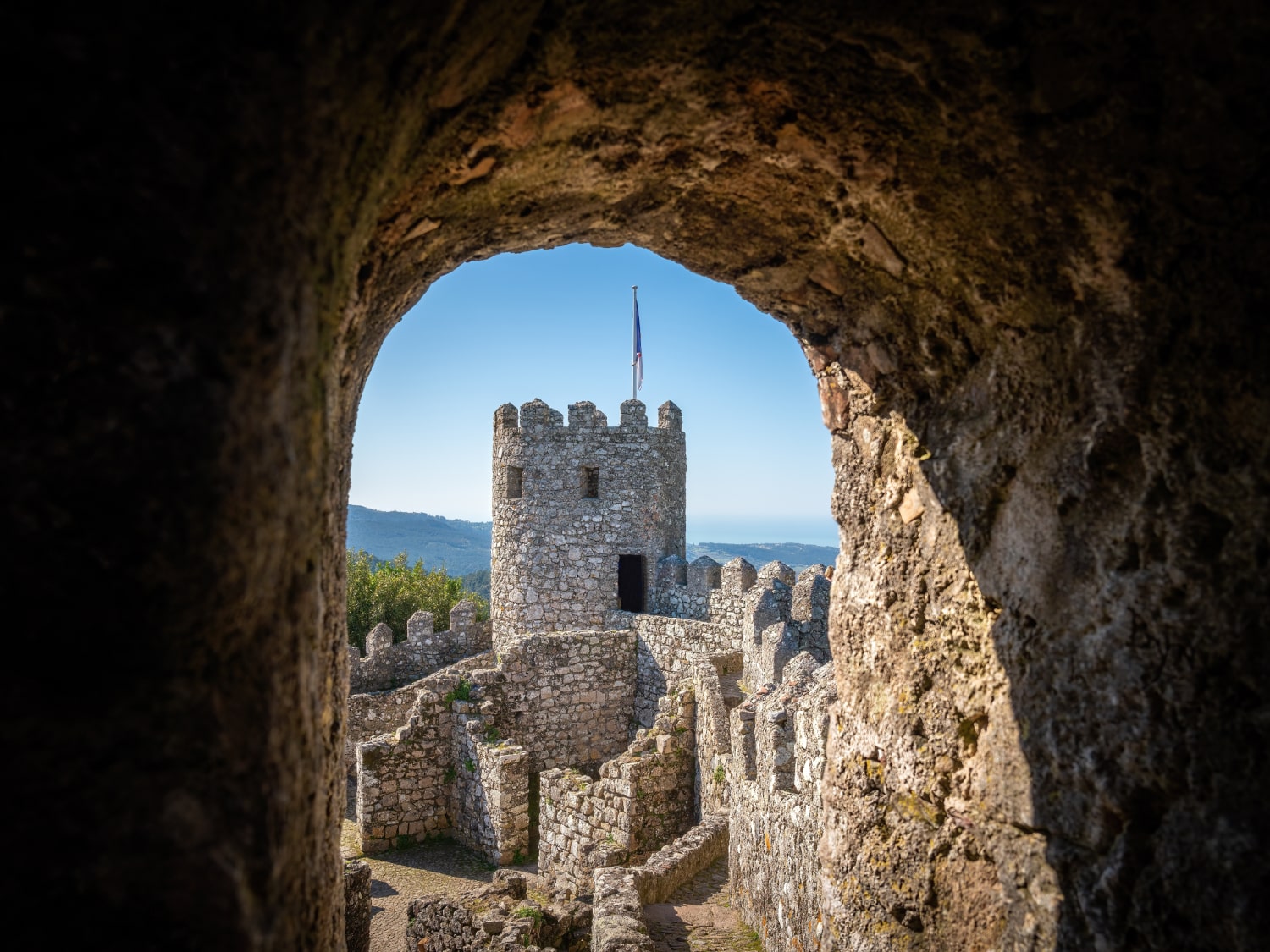
Another important landmark for us to visit is the Moorish Castle, which the Moors built in the 8th century.
Is Moorish Castle worth visiting? Well it's one of the most stunning things about the Iberian peninsula is the many Moorish vestiges left from the great Muslim empire in northern Africa. Built during the 8th and 9th centuries, the Castle of the Moors is one impressive example of strategic fortifications built for defense. The castle was later left in ruins until Christian crusaders took the Moorish construction in 1147.
At the Moorish Castle, you can see an ancient wall that was used to defend the location against enemies approaching from outside. This section is called “The Castle” because it was once a fortress for Portuguese kings and queens. The oldest part of Peña Palace is actually this Moorish castle!
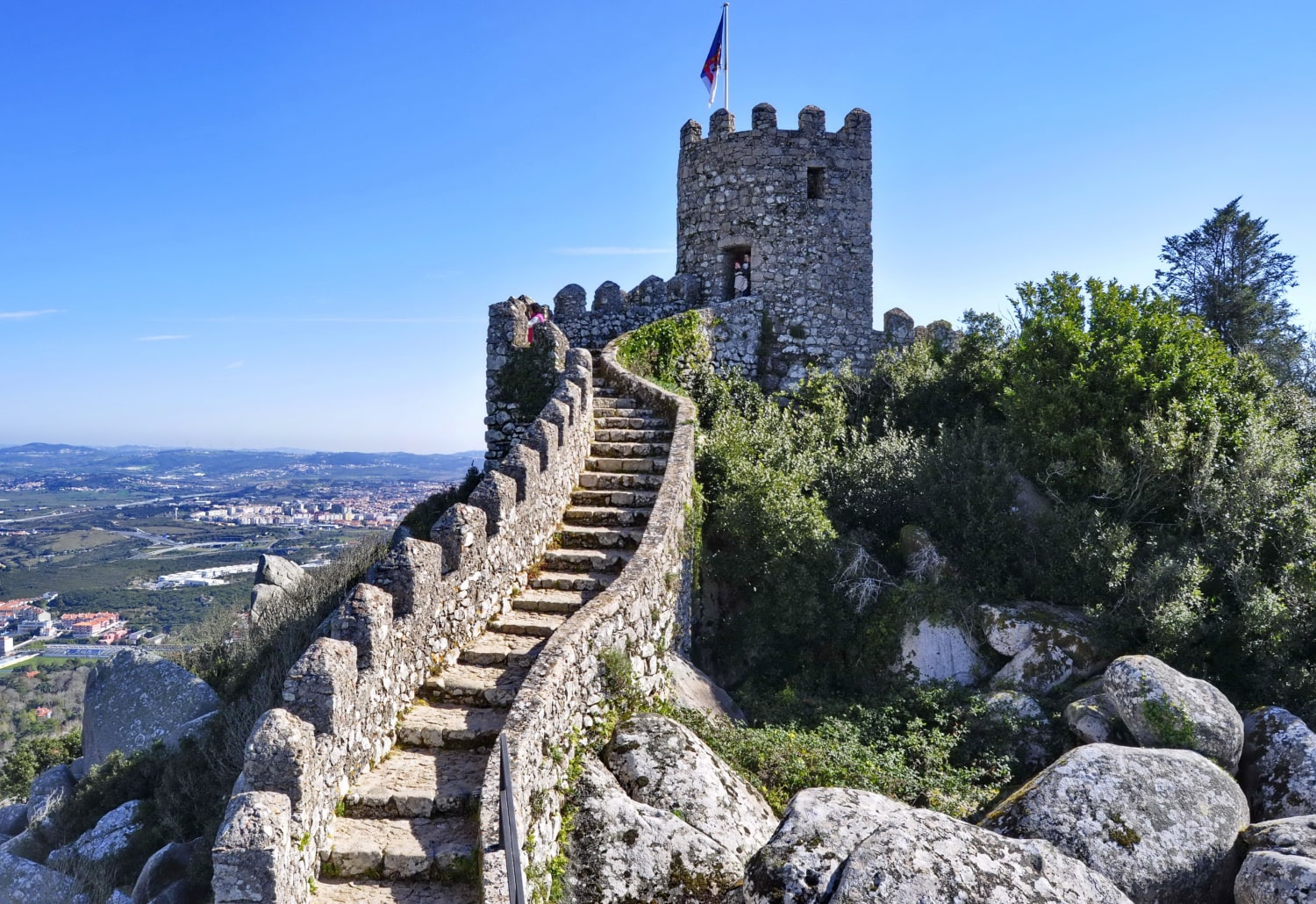
The Historical Background of Sintra
On the other side, you will see where the Christian victory took place as King Afonso Henriques won back Portugal in 1147. This was known as the Battle of Ourique. It is considered a turning point in the Reconquista, the Christian conquest of Spain by King Alfonse VI of Castile, who led his troops to victory over a Muslim army consisting largely of Berbers and Moors from North Africa.
King Afonso Henriques was crowned with a crown made from gold taken from his own father's helmet by Bishop Sisnando Davide on July 25, 1139, at Church Santa Maria do Olival near Porto, who also anointed king with holy oil given to him by Pope Innocent II. He then proclaimed himself “King” but only after many years did he receive official recognition from Pope Adrian IV on June 24, 1154.
Why is Peña Palace so famous?
The Peña Palace is one of the most beautiful castles in Europe and it's a must-see while you're in Sintra. It has been home to many famous people over the years but it's most famous for being owned by King Ferdinand II and Queen Maria II. They had it built between 1843-1860 as a summer residence for themselves, but they never actually spent much time there because they were always busy with royal duties.
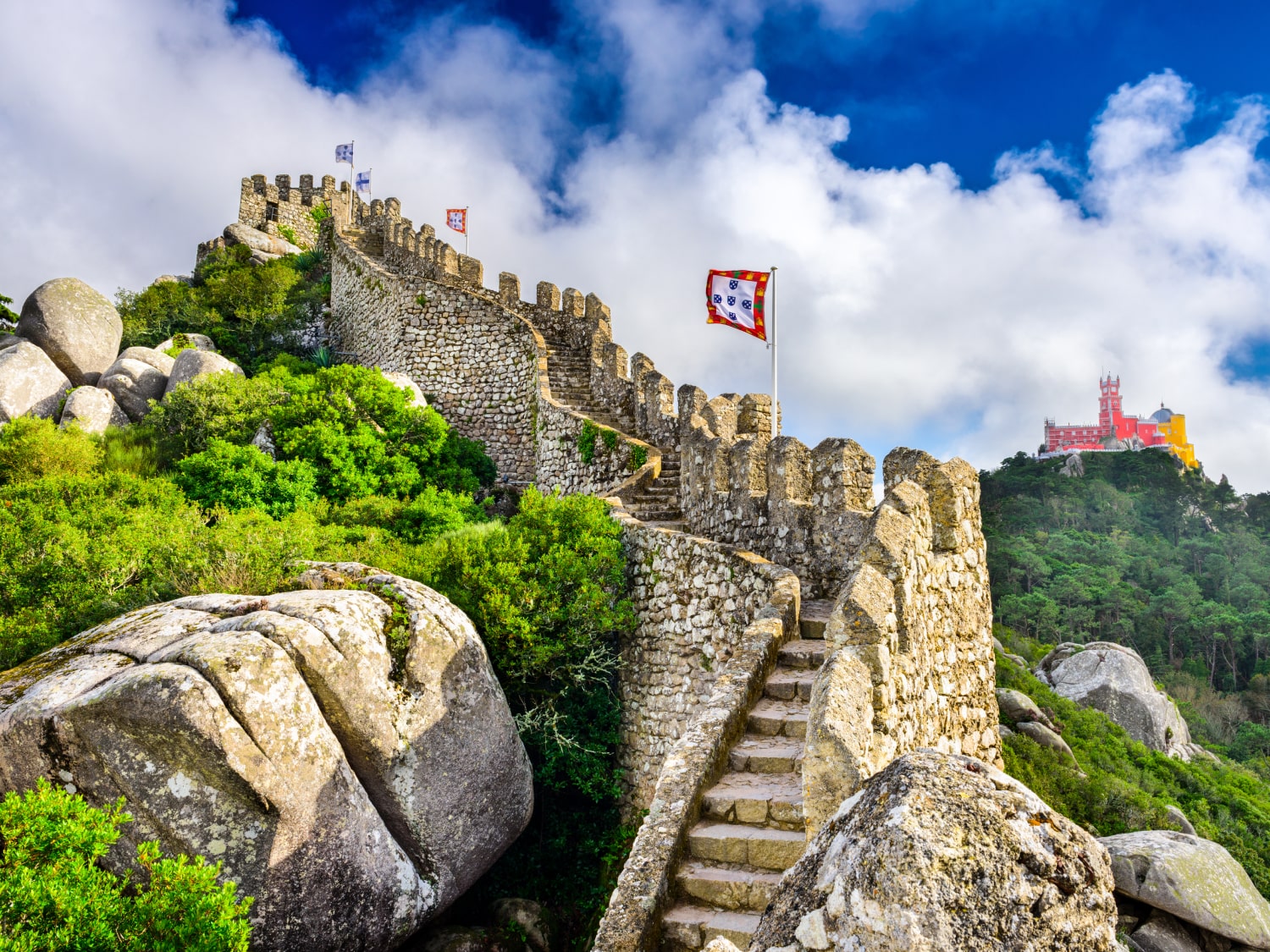
Best Museums in Sintra
Museu do Ar
The museum celebrates Portugals Air Force and provides facilities for the conservation of unique aeronautical artifacts. Located in the Sintra Air Base, it was first founded in 1909. It opened to the public in 1971. Its most recent location was built in 2009 to hold the larger collection. the museum has a collection of aircraft from WWI and WWII. the museum has a collection of aircraft from the Portuguese Colonial War.
Museu das Artes de Sintra
Museu das Artes de Sintra is located in a neo-classical building once belonging to a casino. The museum hosts a variety of educational programs and temporary exhibits. Hosting many works belonging to famous Portuguese artists such as the sculptor Dorita de Castel-Branco and painters António Carneiro and Columbano Bordalo Pinheiro
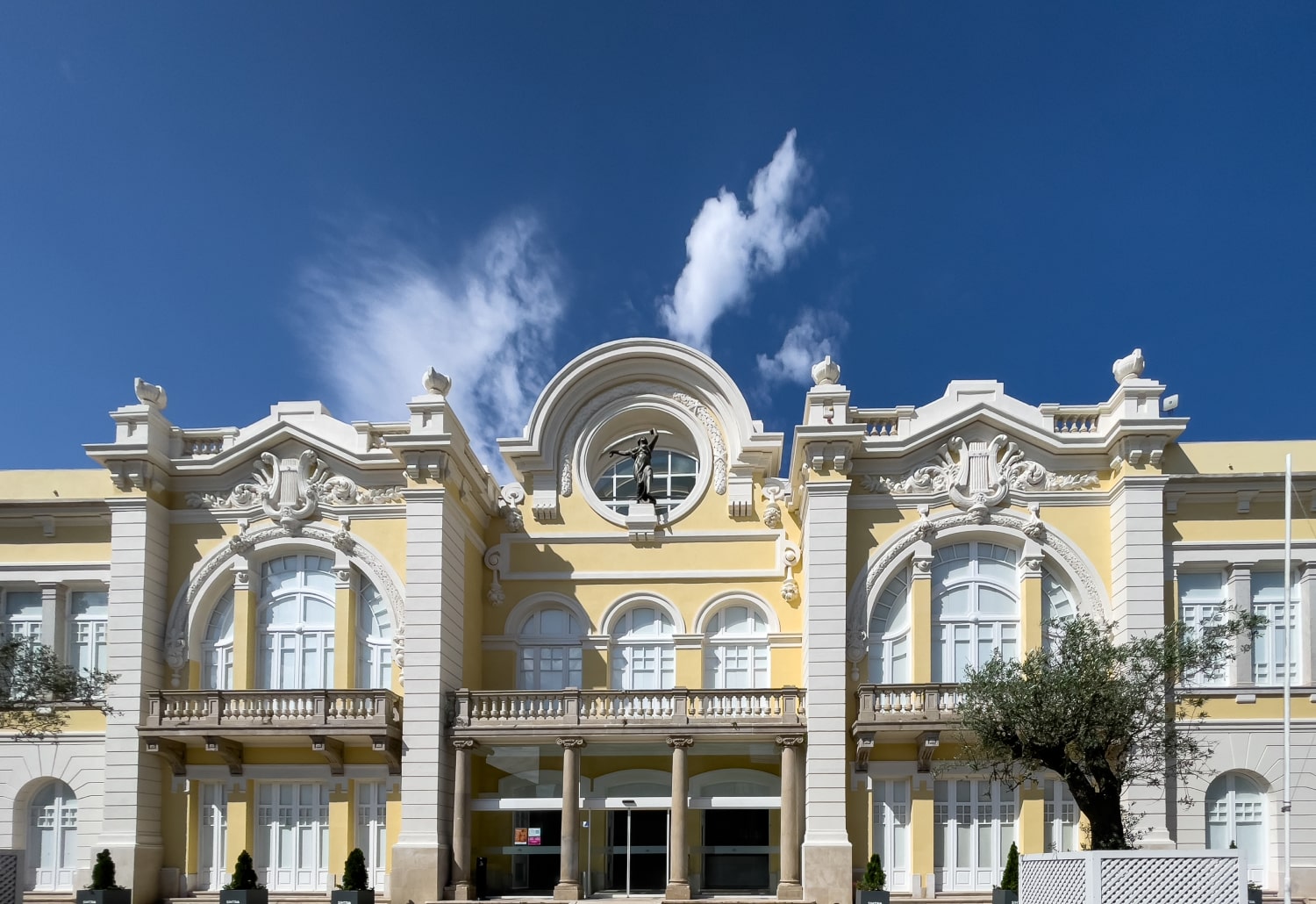
News Museum
Located in the Old Town, this museum boasts a robust collection of historic radios, televisions, cameras, and news archives. It was inspired by the Newseum in Washington DC and opened in April 2016. It is one of the first museums in Europe dedicated to the impact of media and communications.
Museu do Bonsai
Nestled in a corner of the Quinta da Regaleira you’ll find this museum’s terrific display of bonsai trees. The museum’s staff also teach lessons that help horticulturalists from around care for their bonsai species at home. The museum was founded by the Japan’sCount Kawamura Sumiyoshi, a Navy Admiral.
Museu de História Natural
Located in the heart of the historical city center, the museum was founded by collector Miguel Barbosa and his wife, Fernanda Barbosa. they worked for 50 years to build their collection of priceless fossils, minerals, and meteorites. The museum is open from 10 AM to 6 PM on Tuesday to Friday and from 12 PM to 6 PM on the weekends.
Nearby Historical Landmarks You Must See
Sintra National Palace
Often less crowded than Pena Palace, the Sintra National Palace served as the royal residence of Portugal from the early 15th to the late 19th century. It sits adjacent to the Moorish Castle and is now a museum. The palace is one of the most important surviving examples of Portuguese architecture of the Romantic period.
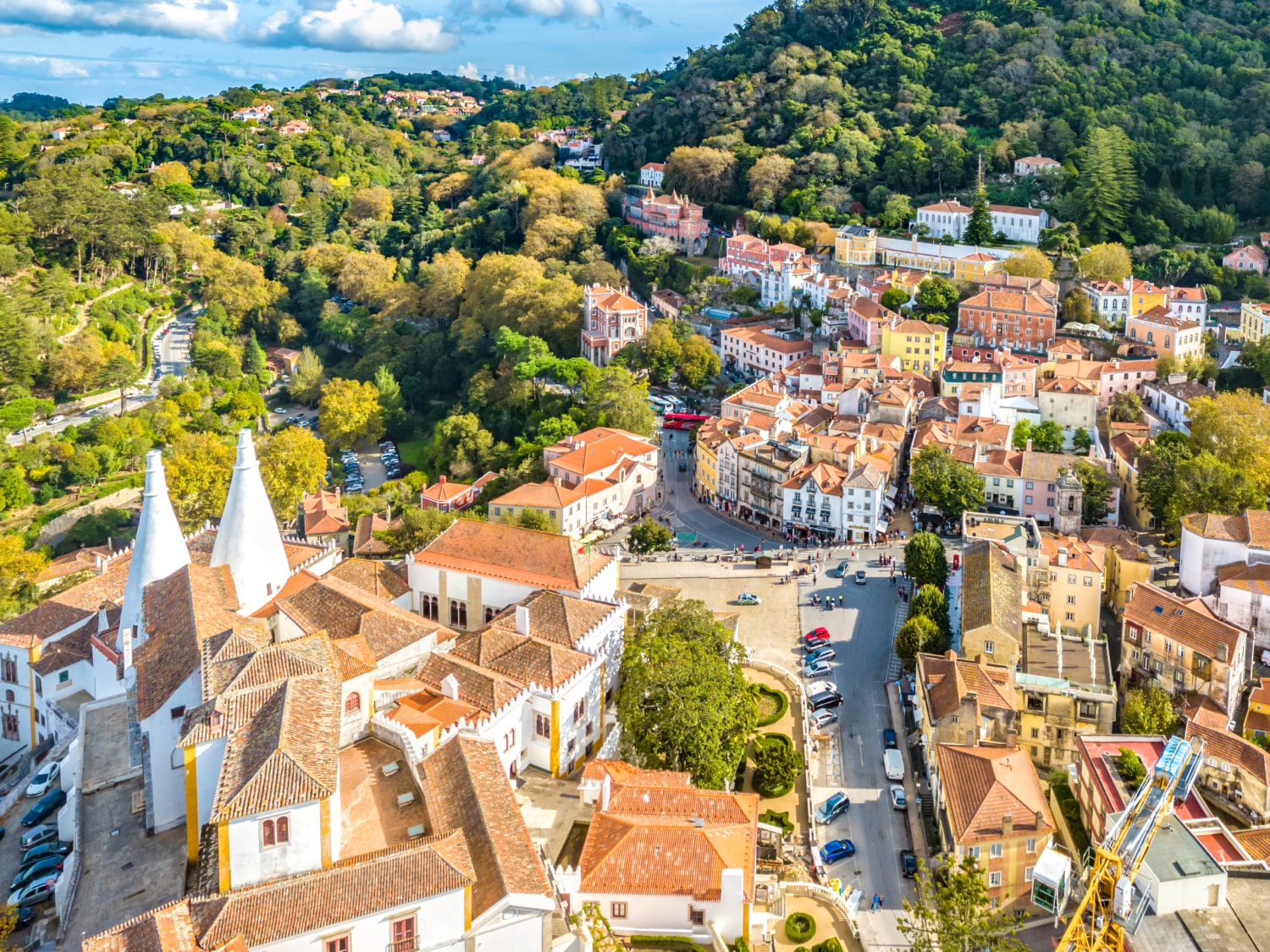
Monserrate Palace
The palace was built by Maria II of Portugal as her summer residence, providing an escape from the bustle of Lisbon. It overlooks the Atlantic Ocean and inspired writers such as Lord Byron with it’s medieval atmosphere and architecture. The estate changed hands many times before being designated a UNESCO World Heritage Site in 1995 and opening as a museum in 2000.
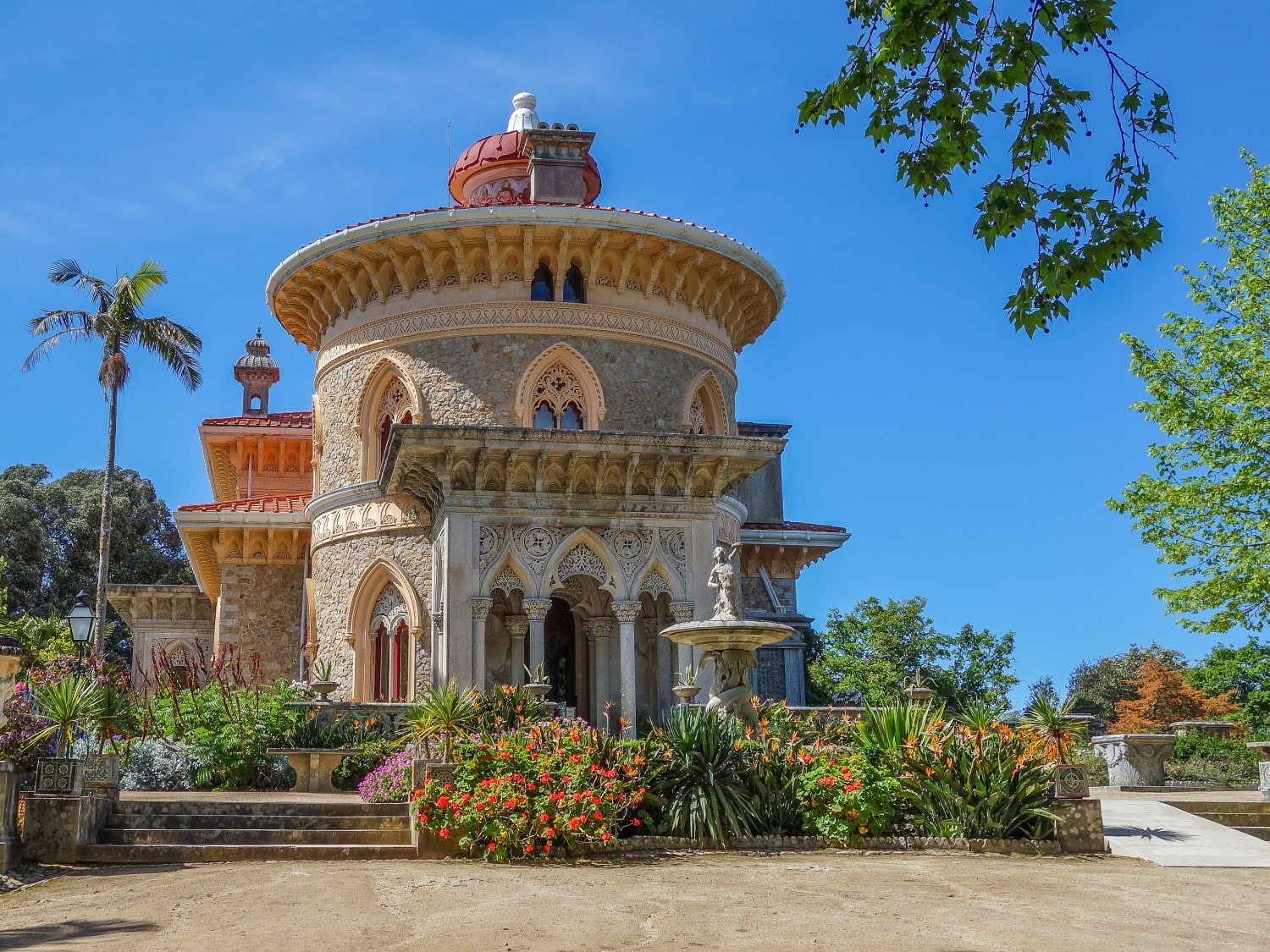
Quinta da Regaleira
Built during the 19th century, this remarkable manor-style house has stood the test of time. Its first owner was António Augusto de Carvalho Monteiro, who worked closely with the architect to design its eclectic facade – a blend of the Italian Renaissance, Medieval, and Classical styles.
Cabo De Roca
If you need a respite from the city, the Cabo de Roca lighthouse makes a fabulous addition to any day trip – though is best reached by private car, the bus schedule can be unpredictable. Since 1772 it has operated at the most westerly point in continental Europe, guiding ships across Cape Roca. The parks and hiking trails that surround it provide remarkable vistas and unique vegetation to learn about from local guides. Portuguese explorers once believed these cliffs to mark the edge of the world, up until their expeditions of the 14th and 15th centuries. With heavy winds and challenging trails, it’s best to check the forecast before visiting.
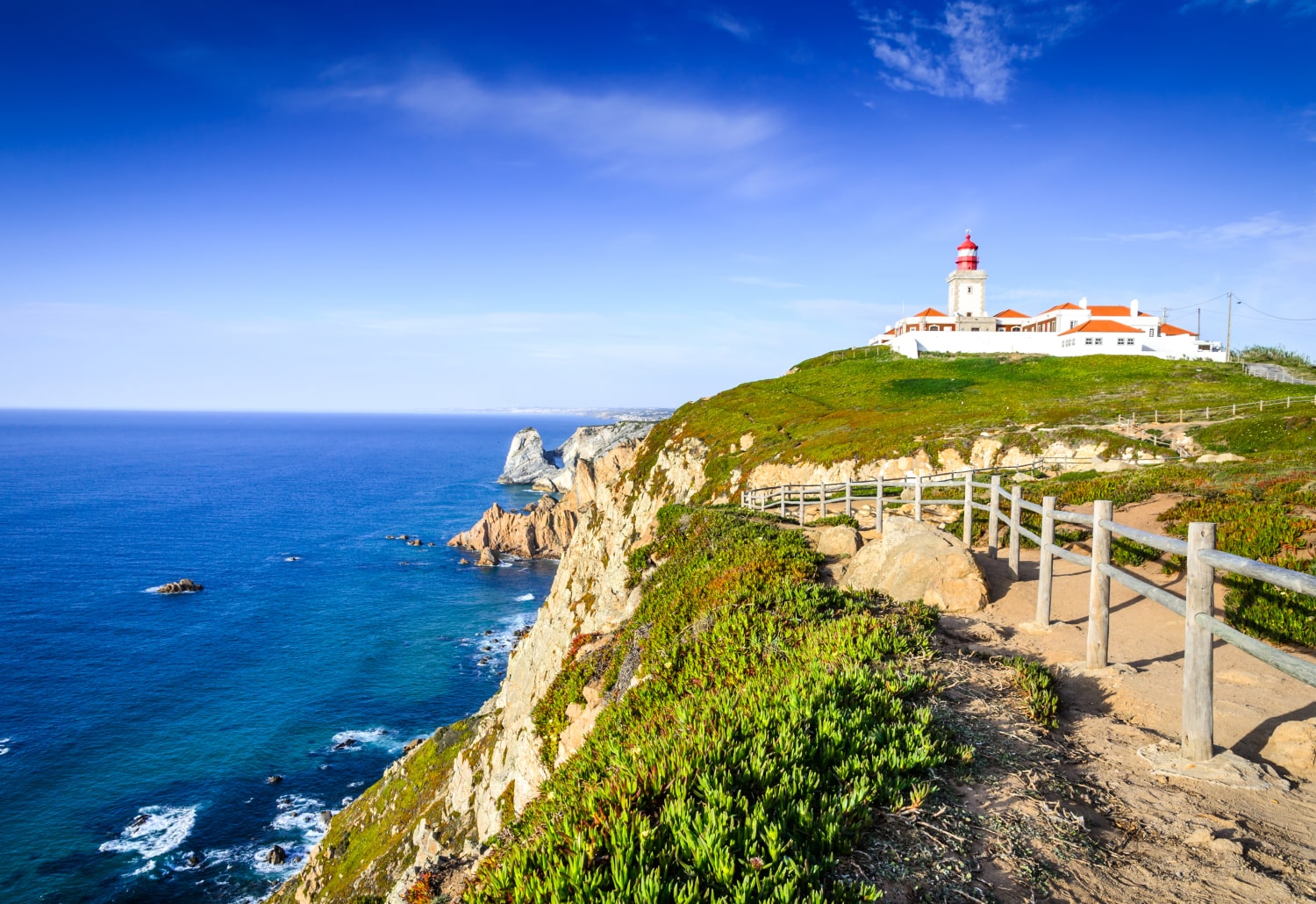
Convent of the Capuchos
This historical landmark was founded in 1560 AD when eight friars first reached Sintra’s outskirts from the convent of Arrábida (50 miles away in Sesimbra). They formed a reclusive monastery up until the site fell into disrepair in the late 19th century.
The convent’s most famous resident was Friar Honório, who lived for more than 100 years in penance, habituating a very small hole carved into the structure’s walls. His story of devotion to god impressed English poets who later passed through the region such as Southey and Byron.
Planning the Perfect Day Trip From Lisbon
We recommend taking a day trip by train from Lisbon (about 40 minutes away), which will take you through some beautiful landscapes along the way before dropping you off at Sintra itself. Another option is to rent bikes for €10 each and cycle around the surrounding areas!
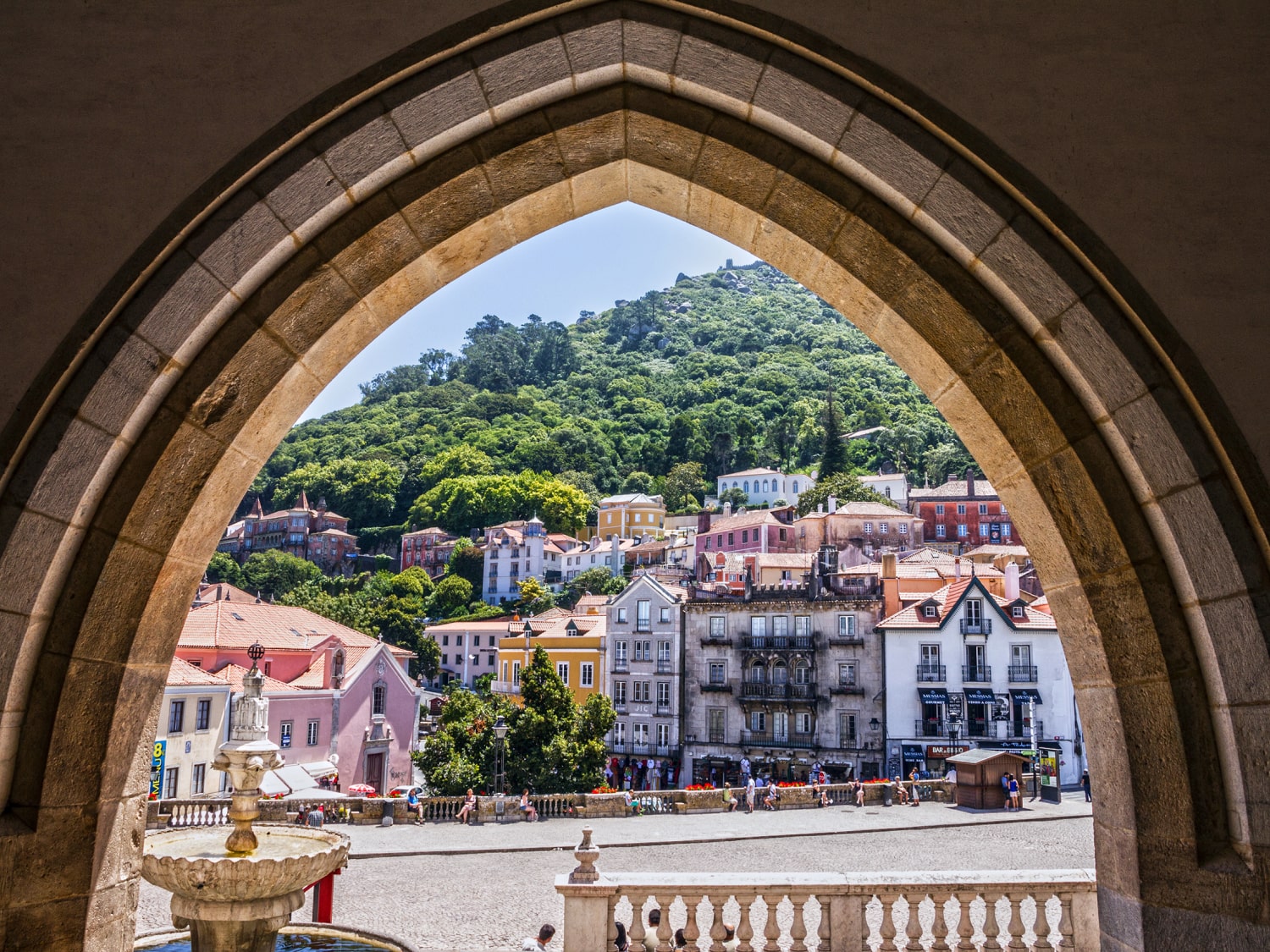
Taking the train from Lisbon to Sintra
Sintra is a quaint little town in Portugal, located just over an hour away from Lisbon. The small town sits at the top of a mountain and is famous for its beautiful parks and castles. Parking here can be limited during the high season and so we recommend taking the 40-minute train ride from Lisbon or hiring a car service. Once you’ve arrived, you’ll have the option to purchase a day pass aboard the tourist bus that circumnavigates the city’s main historic sites.
Is a day trip to Sintra worth it?
Sintra is a great place to visit if you want to get out of the city and see some beautiful historic sites. The royal families throughout Portugal’s history have appreciated Sinta as a summer getaway because of its picturesque vistas and sea breezes.
Today, travelers enjoy the escape from city life that Sintra provides all year round. There are many things to do in Sintra, Portugal, making it an excellent travel destination — whether you spend the day or the whole season.
How many hours should you spend in Sintra?
This is a tricky question for us to answer, because the answer depends on several factors. If you only want to see Sintra's key tourist highlights, such as the palace and castle, you can get away with planning a half-day excursion and only spending 2 or 3 hours touring the city.
However, to really make the most of your visit to Portugal, we recommend departing Lisbon early in the morning and returning late in the evening – make a full-day excursion out of your trip to Sintra.
And, if you want to hike through the gorgeous hillside surrounding Sintra, stay for 2-3 days so that you have a chance to really get a sense of the space.
How long is the trip from Lisbon to Sintra?
By train, you can travel from Lisbon to Sintra in about 40 minutes. We recommend departing from Rossio station in Lisbon for the best timetable options.
Alternatively, you can venture by car; the journey will be roughly 30 minutes long, depending on traffic.
Want to learn about the world's treasures from your living room with our experts? Dive into Portuguese history, hidden destinations around the globe, and other topics with our upcoming online lectures, hosted by local experts.
Do You Need a Visa to Visit Portugal?
Planning a trip to Portugal can be an exciting adventure, but one of the first questions many travelers have is: "Do I need a visa to visit Portugal?" The answer to this question varies depending on your nationality, the purpose of your visit, and the duration of your stay.
Portugal, a part of the Schengen Area, has specific visa requirements that apply to different travelers. Whether you're visiting for tourism, business, or family reasons, understanding the visa process is crucial for a smooth travel experience.
Applying for a visa involves filling out an application form, submitting the required documents, and sometimes attending an interview at a consulate or embassy. The duration of your visa will depend on its type. Schengen visas, for example, are usually valid for short stays, while national visas cover longer durations.
For detailed information on how to apply for a visa to Portugal, the specific documents required, and insights into the application process, we recommend visiting their official website. It offers comprehensive, easy-to-understand details on Portugal's visa requirements, ensuring you have all the information you need for your upcoming trip.

